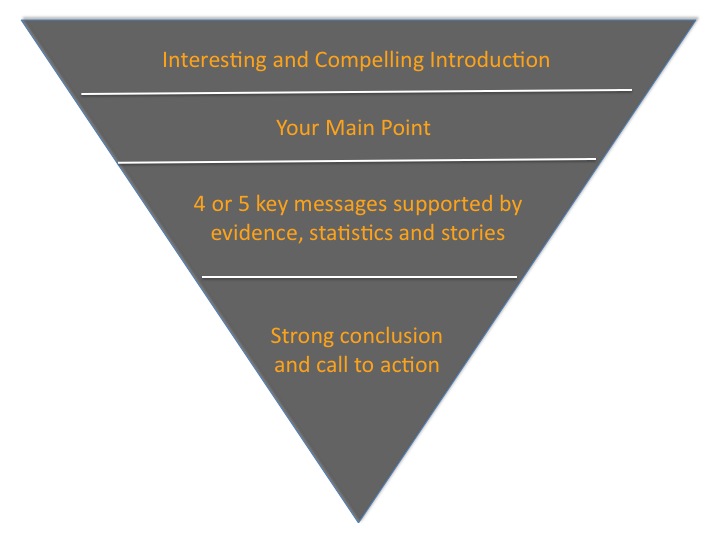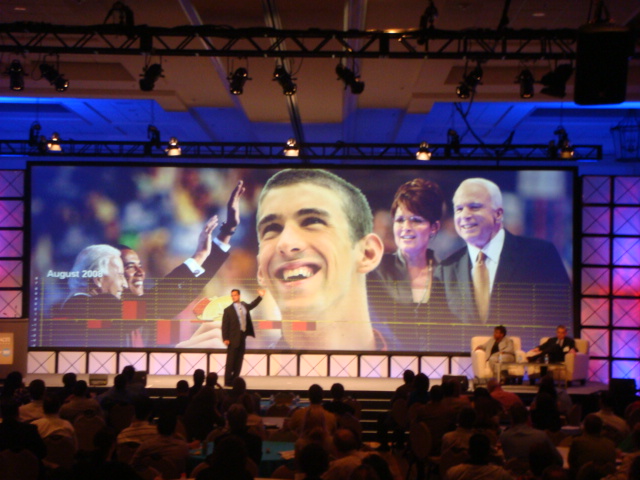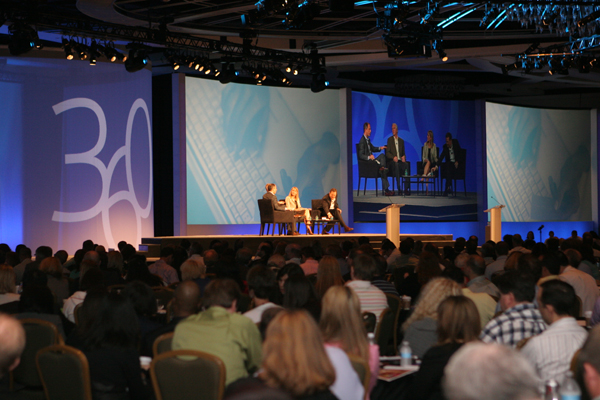Use Your Left Brain and Right Brain When Planning Your Next Meeting
Part 2
Our new Esprit eNewsletter continues its three-part series exploring how event planners can learn more about whole brain thinking, and use these tips when planning their next event.
In our last eNewsletter, we discussed that the key to making a meeting effective was to make it memorable by appealing to both sides of an audience member’s brain: the left side of the brain processes the information that is presented, and the right brain is responsible for intuition and emotion. The overall message of the meeting should appeal to both these categories. As you design your meeting, each part is equally important. This month we will focus on the left brain and taking the facts and information that you want to convey to your audience and transform that into direction and action.
Left Brain – What Do We Want Them to Know?
Good meetings teach the audience something new as well as remind them of something they have learned before. The core ideas behind teaching should be used. They are explanation, reasoning, finding things out, questioning, content evidence, and credible authority. Meetings should never be an occasion to coldly present facts. Make it easy for your audience to follow the flow of information and lead them to a point where they can learn and decide.
Creative meeting planners and presenters find a way to weave in new information with already known facts in a way that tells a story and makes the information memorable.
We will look at various meeting communication tools and room layouts to help you get your message out there and how to make your audience own it.
- Speech Structure
- Visuals
- Different Points of View – Panel Discussions
- Breakout Sessions
- Working Documents
Speech Structure
A crucial part of every meeting or event is content, plain and simple. Your organization has information that you want to convey to the audience. You want them to absorb it and remember it. The simplest way to do this is to package your information as this appeals to the left side of the brain. You want to make sure the data you are presenting is organized and contextualized. A great model to follow when drafting your presentation is the inverted pyramid.
Presentation structure is important. Use the inverted pyramid as your guide when you craft your speech and assemble your accompanying materials.

Visuals
Much has been said about Death by PowerPoint and how many meetings fall short of their goals with hour upon hour of boring, text heavy slides. Don’t turn the notes section of your deck into the slides. The PowerPoint deck should have appealing visuals and simple keywords and thoughts to accompany what you are saying.
Engage your audience and take advantage of many graphic design ideas such as PowerPoint Zen to create images that truly support your speech. http://www.presentationzen.com

Take advantage of Spatial Parallelism. This concept has been developed by leading designers to present as much relevant information as possible on as large a scale as possible. Spatial parallelism takes advantage of our capacity to reason with multiple images that appear simultaneously within our eye span. Audiences are able to select, sort, edit, reconnoiter and review information, which keeps them engaged.
Different Points of View – Panel Discussions

Well-designed panel discussions led by a great moderator engages one’s thought process. Audiences love the spontaneity and real answers over a rehearsed and sanitized PowerPoint deck. Furthermore, many of the characteristics of good teaching previously mentioned are inherent in panel discussions such as explanation, reasoning, finding things out, questioning, content evidence, and credible authority.
Questions from the audience are now easily obtained via smartphone apps, Twitter or the old tried and true method…the mic runner. Also, hearing from customers can be some of the most enlightening moments at meetings.
Breakout Sessions
Room set up is crucial to the success of an event. Today’s breakout sessions and workshops should be all about participation. More recently, companies are presenting to a new generation of tech-savvy individuals who demand a fresh approach; audiences want to be engaged and heard rather than addressed, and the set-up of your room should tap into your audience’s preferences. We recommend the following group seating configurations to make these sessions more engaging and productive.

Open Space. This approach brings people together to discuss issues related to a specific topic. Participants volunteer to identify specific matters and then convene into small groups to discuss them. The group self-organizes to determine the agenda, examine the issues, and capture the output. A company staff member or other topical expert is often available to provide advice and discussion guidance.
World Café. This arrangement creates a café-like atmosphere for participants to discuss issues while sitting at small tables. At regular intervals, people move to different tables to learn something new about the topic—or, other unrelated subjects. We call this approach “speed learning.”
“Meet the Speakers.” One of the comments we often hear is, “It would really be nice to meet the general session speakers.” This is a great opportunity for speakers to make a huge impression on attendees and also learn valuable insights from their constituents. Create a casual environment where participants can interact face-to-face with executives or other industry experts after the general sessions.
These three room layouts do much more than provide adequate space and arrangements for your audience. They appeal to the left side of the brain. Having room to move, an opportunity to be heard, more casual opportunities to interact with colleagues, as well as meet the speakers, addresses how your audience wants to learn. They want to be a part of the process, be engaged, and participate. Not only will that make the overall experience better, but it will help them remember your event and your overall message.
Working Documents
Links to sites, topical blogs as well as a well-designed print piece are great accompaniments to your oral presentation and can reinforce and elaborate upon your speech.
Don’t miss an opportunity to develop a well-designed electronic or print piece to support your speech or session. Naturally, the content should follow the inverted pyramid design of your speech. It will help drive the content, as well as subsequent discussions and interactions. Information should also include:
- A written synopsis of the session, including the title, a statement of purpose/objectives, key points, and expected outcomes.
- High-resolution graphics and diagrams to support the copy. Eye-catching visuals will help foster thinking and exploration by the reader.
Keep in mind, written documents require more work than simply compiling a list of bullet points on slides. Writing out key points forces presenters to be clear, stay on task and provide attendees a take-away for later review.
Summary
Remember, there are many different ways to use your left brain and learn at a meeting or event.
- Package and make it easy for your audience to follow the flow of information
- Present information in different and interesting ways
- Present different points of view
- Use good teaching methods
- Find time to have active group discussions and networking
- Like a good story, lead people with information and let them decide
